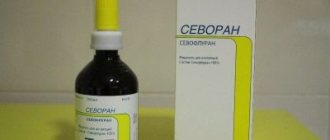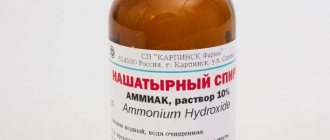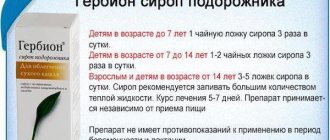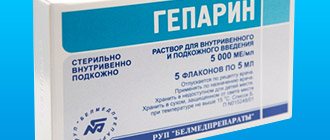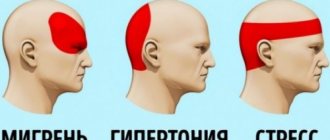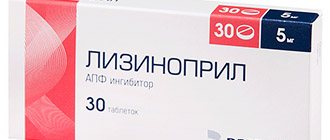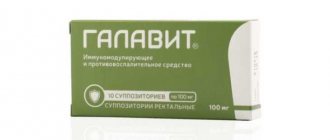pharmachologic effect
What is Ketamine? This is a drug that, when administered intramuscularly or intravenously, can have narcotic (anesthetic) and analgesic effects. Pharmacological group – “Anesthetics”. The active substance has a short-term effect, and in narcotic doses allows you to maintain adequate independent breathing. The drug has dissociative general anesthesia, which is explained by its inhibitory effect on the subcortical formations of the thalamus and the associative zone.
The mechanism of action of Ketamine is based on the selective suppression of neuronal transmission in the structure of the cerebral cortex, both in the thalamus and in association areas. At the same time, stimulation of the limbic system and hippocampus . As a result, functional separation of nonspecific connections develops in the structure of the thalamus and midbrain, incoming nociceptive afferent stimuli to the higher brain centers from the spinal cord are blocked, and impulse transmission to the medulla oblongata (reticular formation) is inhibited. It is believed that the analgesic and hypnotic effects of Ketamine are associated with the influence of the active substance on various types of receptors. The effects of the drug are not associated with blocking sodium channels in the nervous system and effects on GABA receptors. Wikipedia contains information on the history of Ketamine synthesis.
Consequences of ketamine
It is important to note that any negative consequences of ketamine use occur only with repeated or chronic use of this drug; they include a number of neurological and urological effects.
Neurological consequences are represented by various types of cognitive disorders, primarily memory impairment. Ketamine causes dose-dependent impairment of both short-term and long-term memory (particularly episodic and procedural). Chronic use of ketamine also causes mental disorders with the formation of delusional thoughts in the form of a conspiracy theory. Some animal studies demonstrate significant neurotoxicity from chronic ketamine use, resulting in the destruction of nerve cells in the brain.
The urological effects of ketamine are caused by the irritating effect of the final metabolism products of the drug on the urinary tract with the development of ulcerative cystitis, urinary incontinence, and painful urination with blood.
With the non-medical use of ketamine, cases of drug overdose often occur, causing respiratory arrest and death if medical care is not provided in a timely manner.
Indications for use
Ketamine what is it? The medication is used both for mononarcosis (1 component) and for combined anesthesia, mainly in people with low blood pressure, or when it is necessary to maintain spontaneous breathing in the patient. Most often, Ketamine is used during evacuation in case of massive blood loss and traumatic shock, during short-term cardiac surgery, and in emergency surgery. Ketamine is prescribed for:
- cardiac catheterization;
- endoscopic manipulations;
- dressings in otorhinolaryngology, ophthalmology and dentistry.
The medication can be used during caesarean section in obstetric practice.
Case from practice
A patient was admitted to the clinic in a state of shock caused by massive pulmonary embolism. The decision was made to remove the blood clot surgically. Considering the close relationship of the patient with the anesthesiologist on duty that day, it was decided to use the “best” available anesthetic drug for anesthesia - propofol. During induction of anesthesia, the patient experienced cardiac arrest caused by decompensation of shock, which was caused by propofol. Subsequent treatment did not produce positive results and the patient, unfortunately, died.
Despite the range of positive properties, propofol, however, like most other anesthetic drugs, has a depressing effect on the cardiovascular system, leading to a decrease in blood pressure. Such a decrease in pressure is completely insignificant for a relatively healthy person and life-threatening for a patient in shock. If ketamine, which does not affect the functioning of the heart, had been used to anesthetize the patient described above, then the story would have had a completely different ending...
Contraindications
- epilepsy;
- cerebrovascular accident;
- eclampsia in severe form of circulatory decompensation;
- severe hypertension.
If it is necessary to use muscle relaxants during laryngeal surgery, Ketamine is prescribed with caution. Mixing with barbiturate solutions is unacceptable due to the risk of precipitation.
special instructions
In cases of operations on the larynx and pharynx, the drug is used in combination with muscle relaxants.
Patients, for at least 24 hours after using the drug, should refrain from engaging in potentially hazardous activities that require increased attention and speed of psychomotor reactions.
Please note that Ketamine:
- Potentiates the effect of inhalation anesthesia;
- Enhances the effect of tubocurarine, but does not change the effect of succinylcholine and pancuronium;
- Chemically incompatible with barbiturates (due to the formation of precipitates).
Side effects
The medication has a general effect on the human body. When the solution is administered, a rise in blood pressure by 20-30%, an increase in heart rate, an increase in minute blood volume, and a decrease in peripheral vascular resistance are recorded. The use of Sibazon ( Diazepam ) helps reduce the stimulating effect of Ketamine on cardiac activity. In most cases, the active component does not inhibit the reflexes of the upper respiratory tract and does not cause bronchospasm, laryngospasm, vomiting or nausea. Respiratory depression is recorded with rapid intravenous infusion of the solution. Atropine and Metacin can reduce salivation. When the medication is administered, hallucinations , hypertonicity, and involuntary movements may be recorded (can be relieved by the administration of Droperidol and tranquilizers). There may be redness of the skin along the vein at the injection site; upon awakening from anesthesia - prolonged disorientation and psychomotor agitation .
Positive properties of ketamine
Compared to other anesthesia drugs, ketamine has the following advantages:
- the possibility of not only intravenous, but also intramuscular administration of the drug, which is of great importance when anesthesia must be started quickly, and the patient’s veins are very bad or not visible;
- causes dilatation of the bronchi, so it can be safely used in patients with bronchial asthma or obstructive bronchitis;
- does not suppress the cough reflex, which is important in the case of reflux of stomach contents into the esophagus and oral cavity;
- does not depress the heart, which is very important for patients with severe heart failure, blood loss or shock;
- does not suppress breathing (except in cases of overdose), which is important when performing anesthesia in the absence of oxygen and (or) an anesthesia machine.
Even in ancient times, scientists gave the heart and lungs the figurative name “death gate”, since an acute catastrophe in these organs can literally lead a person to death within a few minutes. It is probably appropriate to note here that respiratory complications (in particular, the inability to establish adequate breathing when it stops) are the leading cause of death during anesthesia. Therefore, during anesthesia, maintaining the stability of the heart and lungs is one of the priorities. The value of such properties of ketamine as the ability to have minimal effects on the function of the cardiovascular and respiratory systems becomes quite obvious here.
Instructions for use of Ketamine (Method and dosage)
The solution is administered intravenously (fractionally/in a stream) or intramuscularly. Adults are administered intravenously 2-3 mg, intramuscularly - 4-8 mg per 1 kg of weight. Repeated administration of Ketamine allows prolongation of anesthesia (rate 2 mg/kg/hour). This method of administration is possible in the presence of infusion pumps or is achieved by drip administration of a 1% Ketamine solution in sodium chloride solution or isotonic solution (30-60 drops per minute).
In pediatric practice, the solution is used for combined anesthesia. The calculation is made according to the following scheme: 4-5 mg/kg in the form of a 5% solution. Mandatory premedication is required.
The drug can be used in conjunction with analgesics ( Promedol , Fentanyl , depidolor, etc.) and antipsychotics (for example, Droperidol), but this requires a dose reduction.
Ketamine trip
Drug experiences can be good or bad. It is believed that this depends on the sensations and activities prior to taking the drug. If the person was in high spirits, then the trip will be optimistic. If he was depressed or thinking dark or sad thoughts, he would plunge into a nightmare.
This effect has its own “expiration date” - after about a month of using the drug, the addict stops experiencing trips, and instead feels panic and anxiety.
Ketamine and other drugs greatly affect a person's memory and ability to remember and think. Our thought process is directly related to our ability to remember. Human memory is like a movie, where every moment of life is a separate frame, in which, in addition to sound and pictures, smells, tastes and other perceptions are preserved, as well as emotions, thoughts and the exact date of the event.
Drugs cause this film to become tangled and mental processes slow down. And after doses of certain drugs, these memories are distorted, confused and pop up before your eyes, replacing the real world. This is a ketamine trip. The bad news is that when the effects of ketamine wear off, the film (the chronological sequence of memories) does not unravel, but only becomes more and more tangled with each dose. Hence the lethargy, poor memory, inability to concentrate and other mental problems of drug addicts.
Analogs
Level 4 ATX code matches:
Calypsol
Diprivan
Nitrous oxide
Sodium Oxybutyrate
Propofol
- Calypsol;
- Ketanest;
- Ketalar.
Rehabilitation of drug addicts in
It is possible to cope with addiction, and to do this you need:
- the desire of the drug addict, his goals for life and the understanding that achieving these goals is incompatible with the drug;
- eliminating the reasons why a person started using, and this is always some kind of problem that the person could not solve;
- elimination of the consequences of use (personality degradation).
- filling gaps in vital knowledge that caused unresolved problems, insufficient mutual understanding, inability to achieve one’s goals, and feel pleasure in life.
After a good rehabilitation program, a person no longer needs drugs because he feels good without the need to use the drug. He doesn't need doping to get rid of the pressure of problems because he can handle them.
The Narconon program is a rehabilitation program that will help a person regain the ability to solve problems and enjoy life. Call us now! Angel dust (phencyclidine)
Share:
Dissociatives, PCP, Ketamine
Cocaine (crack) and its consequences: addiction and effects on the body
